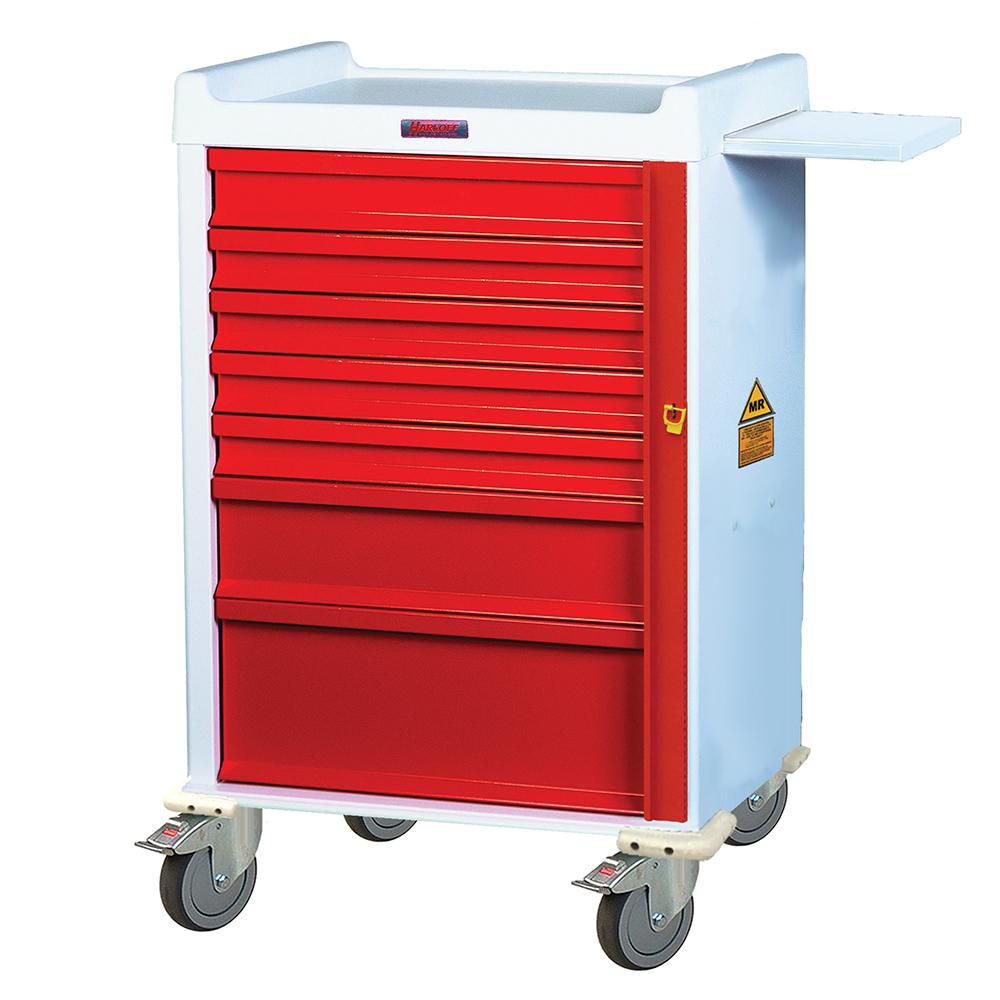-

Standard Line Med Bin Cart - SL36BIN5
$4,494.00

A Beginner's Guide to Medical Storage: What You Need to Know
-
Jun 09,2023
Have you ever wondered how medical supplies are stored and managed in healthcare facilities? The answer is medical storage. It plays a crucial role in maintaining the quality and effectiveness of medical supplies. Understanding medical storage is essential for anyone who works in the healthcare industry or is responsible for managing medical supplies.
Medical storage is a complex process that involves various factors, such as temperature control, inventory management, and safety regulations. Without proper storage, medical supplies can lose their potency, expire early, or become contaminated, which can lead to adverse effects on patients.
If you are a healthcare worker or an individual responsible for medical supplies, then understanding medical storage is crucial. This beginner's guide to medical storage will provide you with the fundamental knowledge you need to know about medical storage, including the types of medical storage, regulatory requirements, and best practices. Keep reading to learn more about the essential elements of medical storage.
The healthcare industry relies heavily on medical storage to ensure that their facilities are equipped with the necessary supplies to provide the best patient care possible. Medical storage systems are designed to provide easy access to medical supplies while keeping them organised and safe. This article will serve as a guide for beginners in the healthcare industry to understand the legal requirements, different types of medical storage systems, factors to consider when choosing one, best practices for organising and labelling medical supplies, and proper handling and maintenance of medical inventory.
Legal Requirements for Medical Storage Facilities
Medical storage facilities are required to meet certain legal standards and regulations to ensure the safe and secure storage of medical supplies. These regulations vary from state to state, but all healthcare facilities must adhere to the guidelines set forth by the FDA and the CDC. One major requirement is the need to maintain the integrity of the stored medical products such as medications and vaccines. Storage facilities must maintain adequate temperatures and humidity levels as some products can become damaged or ineffective in improper storage conditions.
Different Types of Medical Storage Systems
There are different types of medical storage systems available that vary in size, design, and functionality. The type of storage system used depends on the types of medical items stored, the storage location, and the facility's personnel and space constraints. Below are some of the most common types of medical storage systems.
• Cabinets:
Cabinets come in various sizes and designs and are used to store smaller items such as medications, gauze, and bandages.
• Shelving systems:
Shelving systems are used to store medical supplies and equipment in larger quantities and are available in free-standing or wall-mounted designs.
• Refrigerators and freezers:
As mentioned earlier, some medical items may need to be stored in temperature-controlled environments and therefore need to be stored in refrigerators and freezers.
• Carts:
Carts are designed to make it easier to move medical supplies and equipment around the facility, making them a useful tool in transportation.
Factors to Consider when Choosing Medical Storage Systems
When choosing a medical storage system, there are several factors to consider.
• Space:
Consider the amount of space you have available for storage and choose a system that fits within that space.
• Access:
Choose a system that provides easy access to the stored items.
• Durability:
Choose a system that is durable and can withstand the weight of the stored medical supplies and equipment.
• Security:
Choose a system that ensures the security of the stored medical supplies and equipment.
Best Practices for Organizing and Labelling Medical Supplies
To ensure easy access to medical supplies and equipment, it is important to organise and label them. Here are some best practices to incorporate when organising and labelling medical storage systems.
• Arrange items according to their frequency of use to ensure quick and easy access.
• Label the shelves or cabinets to make it easier for staff to find items quickly.
• Use colour-coded labels to identify similar items or items that need to be stored at specific temperatures.
• Ensure that all items are properly labelled with expiry dates and proper identification to prevent misuse or incorrect dosage.
Proper Handling and Maintenance of Medical Inventory
Proper handling and maintenance of medical inventory not only ensures that the inventory is well-maintained, but it also ensures the patient's safety. Below are some best practices to consider when handling and maintaining medical inventory.
• Keep track of inventory levels to ensure they are not depleted.
• Schedule regular stock checks to track inventory status and detect items that are close to their expiration date.
• Always be aware of items that pose a risk to patient safety and disposition them appropriately.
• Ensure that medical inventory is stored in a climate-controlled environment and that humidity levels are managed.
Conclusion and Next Steps for Implementing an Effective Medical Storage System
Effective medical storage systems are essential in maintaining the safety and well-being of patients. By adhering to legal requirements, choosing suitable storage options, organising and labelling medical equipment accordingly, and proper handling and maintenance of medical inventory, healthcare facilities can operate more efficiently and safely. As a beginner in the healthcare industry, asking for expert advice and recommendations from industry professionals could help in making the best decisions while implementing an effective medical storage system.
In conclusion, implementing an effective medical storage system may seem daunting, but it is a fundamental aspect of any healthcare facility. By taking the time to research different storage systems, legal requirements, and best practices for organising, labelling, and maintaining medical inventory, healthcare staff can ensure that their facility remains well-stocked, safe, and efficient for patients.




